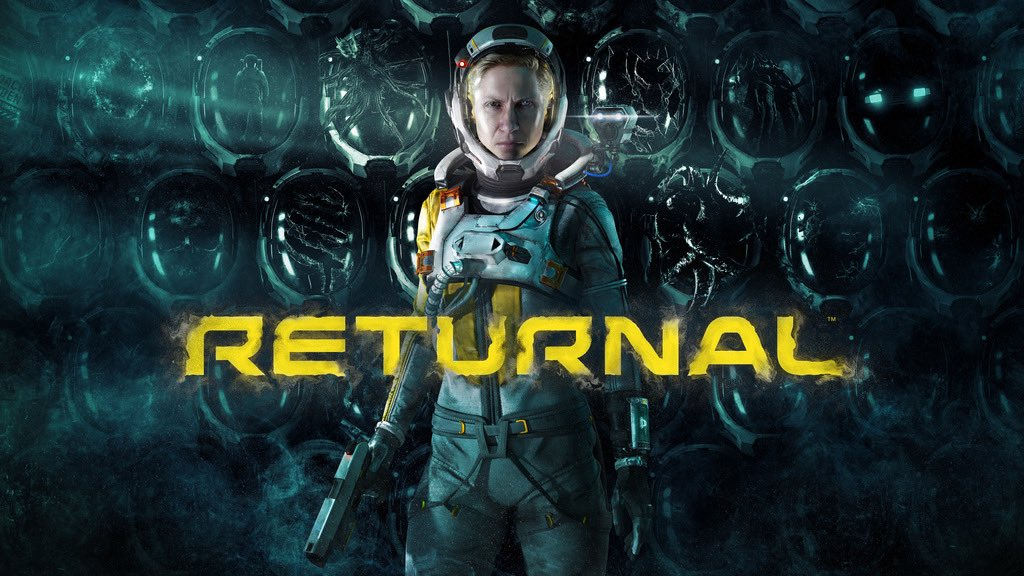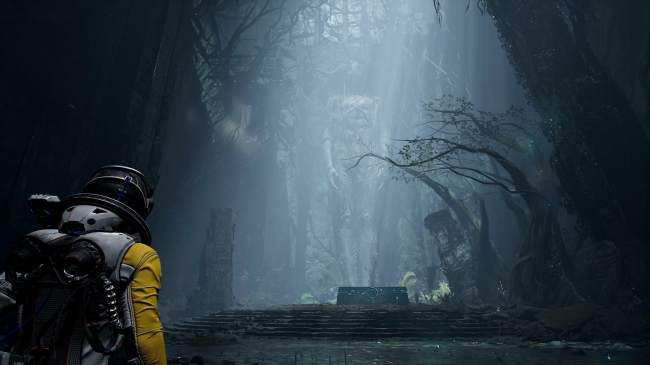Housemarque’s been quietly bubbling as a beloved PlayStation developer for more than a decade. While the studio may not have the same public renown as some of Sony’s big first party studios, their second-party relationship with the console manufacturer has produced some of the most memorable twin-stick shooters from the PS3 to now. But while the DNA of Super Stardust HD and Resogun are obvious in Returnal, Housemarque’s upcoming PS5 exclusive is a far-flung evolution from the days of rotating around a planet. In fact, perhaps even more so than Sony’s own first party titles so far, Returnal is the first game to truly exhibit the possibilities of the next-gen console.
Returnal bears a shocking amount of influences from not just other games, but many forms of media. And ironically, as advanced and next-gen as it looks and feels, its influences all feel rooted in age-old classics. It evokes the ’80s sci-fi space horror of films like Aliens. It brings to bear the Rogue-like feelings of, well, Rogue. Its exploration and various abilities call back to Metroid. Yet just under the surface of it all, it’s distinctly a Housemarque game, even if it’s unlike anything they’ve ever made before.
After crashing her ship on the planet of Atropos, Selene finds herself not just caught in a loop, but one that’s constantly shifting the world and her understanding of her own identity and perception of time. She’ll discover her own corpses from previous cycles, even sometimes forced to fight the monstrous beings they’ve become, along with encountering plenty of other creatures and mysteries along the way. That sense of constant discovery is some of why Returnal is so addicting.
In short, it’s a sci-fi bullet-hell third-person shooter roguelike metroidvania that’s simultaneously empowering and crushing, always begging for one more cycle, one more run to try to conquer the creatures and discover the mysteries of Atropos. Some runs you’ll easily work your way through the levels, and others will present you with sudden terrifying surprises that lead to a quick defeat, but that random nature just makes you want to play more.
The first two biomes—all I can talk about (or even get through) right now—couldn’t be more different from one another. The first is Selene’s crash site, in a dark craggy ruin where the rain never seems to end. It feels suffocating, like it could all close in on you at any moment and swallow you alive. Pushing through to the second area sees Selene in a vast red desert, a Martian wasteland that feels open and endless, and at times gave me some serious Journey vibes. Making your way through feels like much more than just a pallet swap, and subsequent runs constantly unearth new locations and mysteries within each.
Returnal is What the DualSense Was Made For
While I certainly want to save some of my praise for the full review, there are a few elements of Returnal I’d be remiss not to offer my early impressions on. The DualSense controller, in particular, has never seen such brilliant use of its technologies, in some ways even surpassing what Astro’s Playroom was able to do with it.
This is immediately obvious as the rain in the first biome pinpricks individual places on the controller. This isn’t a whole controller vibration, or just one side or the other. It feels like rain is quite literally splashing in different places on your palms and fingers. It’s, quite frankly, the most incredible and immersive use of the DualSense’s haptic feedback I’ve ever felt, and immediately speaks to the possibilities of the technology should developers really dig in and make full use of it. And the way other effects can be layered over one another, including movement, weapon recoil, and being hit by enemies, creates an impressive suite of feelings in the controller like I’ve never experienced.
Likewise, Housemarque’s use of the adaptive triggers goes beyond simply offering more resistance for immersion, though it certainly achieves that too. The entire alt-fire gameplay mechanic is based on multiple levels of pressure on the L2 trigger. Pull it halfway to the first pressure point for more precision aiming, like most third-person shooters. Pulling through that tension will enable you to fire off your weapon’s more powerful alt-fire ability. The change to this gameplay element did take some getting used to at first, retraining my brain not to just mash L2 to aim, but it ultimately becomes an essential tool in your arsenal to quickly dispatch your most powerful attacks on enemies.
In addition, Returnal’s use of the PS5’s 3D audio engine provides an immersive soundscape that captures both the cramped rainy ruins of the first biome and the windy sandy desert of the second. It turns a fast-paced bullet hell third-person shooter into somewhat of an eerie horror game, really helping to communicate the lonely and scary nature of being trapped on an alien world. And no detail goes unremarked. Entering the game’s menu in the first biome changes the raindrop sounds to an immersive pitter-patter on your helmet, legitimately making you feel like you’re Selene in her suit. It’s a claustrophobic sound; relaxing and terrifying at the same time.
Returnal is out next week—and we’ll have our full review at that time—but early impressions are very positive so far. It’s rather incredible what a studio once renowned for arcadey twin-stick shooters has been able to evolve into while retaining so much of their own unique DNA and identity. While I’ve been impressed with what developers have been able to pull off with the PS5 so far, Returnal is the first big experience that feels like a leap forward into what next-gen can be.
Returnal early impressions via code provided by Sony. For more information, please read our Review Policy.









